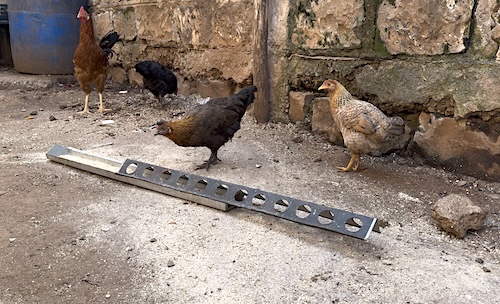Nutrition in the slums: What Korogocho reveals about hunger, hope and tough decisions
Korogocho, one of Nairobi’s most densely populated slums, is often associated with misery and its proximity to the huge Dandora landfill site. But anyone who wants to understand how people there eat, shop and cook will quickly realise that nutrition here is less a matter of taste than a daily survival strategy. A look at five key points shows how hunger, an oversupply of empty calories, personal initiative and a lack of infrastructure interact – and what really helps.
Dandora landfill: emergency supplies and income – but also a health risk
The Dandora landfill, known to many as ‘Boma’, shapes the diet of many residents. It provides food – directly from the city’s waste – and indirectly money through the sorting and sale of plastic and metal. Families then use this income to buy staple foods at the markets. A former resident summed up the bitter ambivalence: ‘I ate the first hamburger of my life here… It was delicious.’
But the costs are high: spoiled food, pathogens, toxic fumes. The landfill provides calories, not health. It is both a lifeline and a danger.
The double burden: children go hungry, adults gain weight
In Korogocho, two forms of malnutrition coexist. Many children under the age of five are too small for their age – a sign of chronic nutrient deficiency. At the same time, many mothers are overweight. This is not a contradiction, but the result of tight budgets: people buy what is filling and predictable – corn porridge, rice, fried foods. Fruit, vegetables, milk and meat are often too expensive. This creates a nutritional dilemma: enough calories, but too few vitamins, minerals and protein for growth, concentration and immune defences.
Animals in the slums: chickens as a small cushion – especially when women make the decisions
Livestock farming seems surprising in a densely populated settlement. And yet it helps to fill gaps. Chickens provide eggs for food and for sale. Studies show that where women own animals and decide how to use the proceeds, acute wasting in children is less common. This strengthens the role of women in the household and improves nutrition in the short term. However, this alone does little to help with long-term growth retardation – that would require a regular supply of more nutritious food.
Change from within: local initiatives combine sport, cleanliness – and food
Korogocho stands not only for hardship, but also for ingenuity. The AYIERA INITIATIVE has grown into a network that gives young people stability through football – and thus creates time slots for school, meals and a safe place to retreat. The WAKULIMA YOUTH GROUP – a self help group – has shown how cleaning up can generate income: collecting rubbish, selling it, buying tools – and using it to set up a chicken project that supplies eggs to the neighbourhood (see photo above). TEDS COMMUNITY HUB strives to integrate disabled children and young people into the community. They also offer a small library where children can read and study after school. These projects originate in the neighbourhood and address what is lacking on a daily basis: structure, protection, food.
Electricity is food: without light, there is no learning; without energy, there is no safe cooking
Nutrition is more than just food on a plate. Without reliable electricity, there is no light in the evening, no refrigeration for milk and meat, no power for kettles or hotplates. Illegal power lines are expensive and dangerous, and fires are common. Those who cannot refrigerate buy small and expensive items or resort to durable but nutrient-poor products. A single safe light bulb can improve learning time, household income and food quality – and thus increase opportunities for children.
What works: small steps, big impact
Anyone who wants to improve nutrition in Korogocho should start with everyday decisions. A reliable, affordable income reduces the pressure to search for food in landfills. Safe, affordable electricity makes cooking and storage healthier. Programmes that specifically empower women – from chicken coops to market stalls – measurably improve child nutrition. School meals, clean water and simple kitchen hygiene prevent diseases that rob nutrients.
Korogocho shows that hunger does not end with calories alone. It ends when families have regular access to nutritious food, clean water, energy and safe routes to get there – and when the people who support the neighbourhood can decide for themselves how to make it better.













